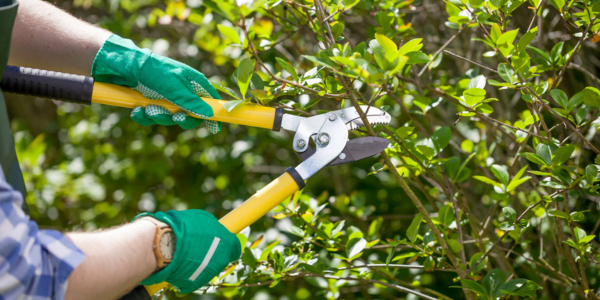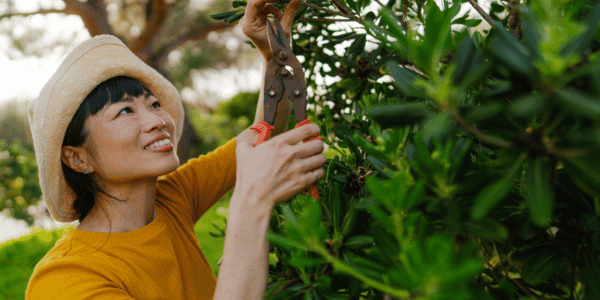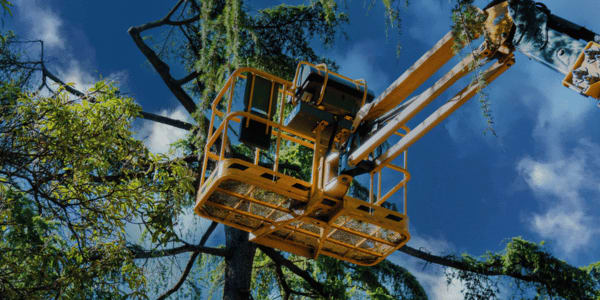Tree Trimming 101: What to Do & What to Avoid

Tree trimming is an important summer landscaping task that should be a priority for all homeowners. When done correctly, tree trimming promotes growth and enhances the overall appearance of your property. However, the wrong tree-trimming techniques can harm them, resulting in long-lasting damage, personal accidents, and more. To prevent those worst-case scenarios and learn how to trim trees properly, follow these essential tips.
What is Tree Trimming?
Tree trimming or tree pruning is the process of removing unwanted, overgrown, or obstructing branches from a tree. This keeps the tree healthy and makes it look and feel better. Specifically, trimming has been found to help trees grow in more healthy patterns and maintain their natural shape. In addition to those effects, removing hazardous branches protects the people, places, and things around them.
How to Properly Trim a Tree
It’s best to leave tree trimming to the pros, especially when dealing with big branches. Anything larger than four inches in diameter should be called in, and even branches two to four inches in size should probably be outsourced. Trees near power lines should also be completely avoided. If you have smaller branches in a safe space that need to be taken care of, follow these dos and don’ts for a smooth process.

DO: Use tree trimming tools and safety gear.
Using the right tree-trimming tools is key for an effective and safe trim. For any tree trimming job, you should have:
- Saws
- Hand pruners
- Pole pruners
- Safety goggles
- Gloves
- Long-sleeve clothing
- Sturdy footwear
Confirm that your tools are sharp and well-maintained to make clean cuts. Blunt tools can cause ragged cuts, driving the decay you’re trying to stop in the first place.
Related Content: Top Tools Every Homeowner Should Have
DON’T: Tree trim without a plan.
Before you start, have a plan. Assess the tree’s structure, decide which branches must be removed, and plan your cuts accordingly. Random or haphazard trimming can cause poor tree structure and increase vulnerability and unattractive growth patterns. Thorough planning guarantees you only eliminate what’s necessary and advantageous for the tree’s health.
DO: Trim dead, damaged, or diseased branches.
Focus on pruning dead, damaged, or diseased branches. These branches can cause health problems for the tree and pose a safety risk, as they can fall unexpectedly. A tree should be trimmed if:
- You notice a large number of pests in and around it
- Storms or frost cause branch damage
- Branches begin to cross or rub against each other
DON’T: Over-trim.
Avoid trimming more than 25-30% of a tree’s foliage in a single session. Over-trimming can stress the tree, reducing its ability to produce food through photosynthesis and making it more susceptible to infection and infestation. Excessive pruning can also lead to substandard regrowth, with the tree producing weak, spindly branches instead of strong, healthy ones.

DO: Know when to trim trees.
Seasonal conditions play a big part in successful tree trimming. Each time of year has its unique benefits:
- Summertime is good for trimming large trees and fruit trees or boosting curb appeal.
- Springtime should be used to trim shrubs, hedges, and unruly plants after they bloom.
- Fall tree trimming should focus on landscaping and gardening to improve their growth for the upcoming spring.
- Winter trimming can help encourage growth in various trees and prevent pest infestation and disease.
DON’T: Trim a newer tree.
A tree in its first year of growth shouldn’t be trimmed except to remove dead or broken branches. Instead, give newer trees two to three years to recover from planting before doing any cosmetic cutting.
DO: Maintain tree balance.
Trim branches evenly from all sides to maintain structural balance. Uneven trimming can cause the tree to lean and eventually topple over. A balanced tree is more stable and can withstand hefty winds and storms. Viewing the tree from a distance before and during trimming can help you assess its overall shape and ensure an even trim.
DON’T: Trim near power lines.
Never attempt to trim branches within 10-12 feet of power lines. This task is extremely dangerous and should only be performed by trained professionals with the equipment and expertise to do so. Working near power lines poses a significant risk of electrocution and should always be handled by utility companies or certified workers.
DO: Skip wound sealers.
After trimming, don’t use wound sealers or paints on the areas you cut. These products can trap moisture and lead to decay. Trees have natural defense mechanisms that seal off wounds and compartmentalize damage. Letting the tree heal naturally is the ideal way to facilitate long-term health and vitality.

DON'T: Hesitate to call professionals if you need them.
While a DIY approach to tree trimming can work with the right guidance, for bigger trees or branches that are difficult to reach, it’s wise to hire professionals to get the job done. They have the knowledge, equipment, and safety training to tackle tall tasks. Professional tree-trimming services can ensure the project is done safely and correctly, preventing damage to your tree and property.
Related Content: When to DIY vs. When to Hire a Pro
Trimming Trees & Lawn Landscaping Tips
Tree trimming is just one task that will enrich the look of your lawn in the months ahead. Now that you’ve got it covered, it’s time to explore some other ways to make your grounds stand out. Check out our “Leaf-Raking Tips to Make Your Life Easier” to keep your property pristine during the fall.
Tree Trimming FAQs
Who is responsible for tree trimming?
Tree-trimming responsibilities largely depend on where trees are situated in a neighborhood. Homeowners are responsible for trees directly on properties, while landowners and utility companies should typically take care of trees around homes and near power lines.
How much does a tree trim cost?
On average, trimming costs range from $250-$700.
Why is tree trimming so expensive?
Tree trimming is expensive because it requires special, costly equipment and an increased focus on safety that may need particular gear or insurance coverage.
How often should you trim trees?
Trees should be inspected and trimmed every two to five years.